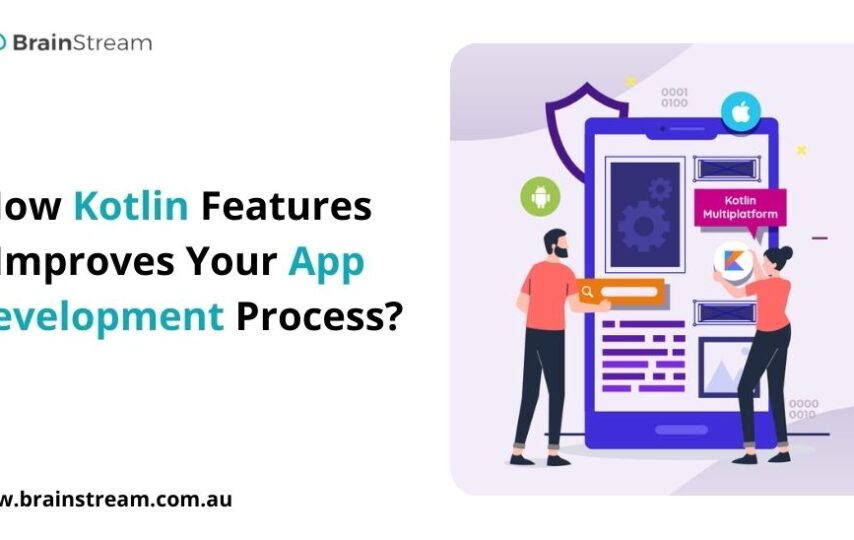In this article, we will discuss the most important advantages that Kotlin provides for app development.
What is Kotlin for iOS Application Development Services?
Kotlin is not an object-oriented language. It was designed as Java’s extension for iOS Application Development Services.
Another thing worth mentioning is that Kotlin doesn’t have any semicolon at the end of the statement, which is something that scares Java developers a little bit.
To be precise, Kotlin for react native app development is an object-oriented language and it might become your OOPs language of choice. It was created by JetBrains, the company behind IntelliJ Idea – first and foremost a programmer productivity tool. What’s probably worth mentioning is that they do support Android development as well using these tools (both free and paid versions).
What does Kotlin Offer for React Native App Development Services?
Now let’s take a closer look at what Kotlin has to offer for us java devs:
Seamless Java Integration – Take Advantage of Both Worlds
One of the best things about Kotlin is that it can be used in any project regardless of being fully written in Kotlin or just having some Kotlin code parts. There are two main ways to use/include kotlin in your project depending on if you want to gradually introduce it or not:
1. Java Compilation – Using Kotlin-Gradle-Plugin
For example, you have a complete java application but you would like to include a single file. In this case, the simplest way is to enable its usage by introducing a plugin into your build. Gradle file:
“2 . Java + Kotlin interop – using Gradle Kotlin DSL
Another way that is designed specifically for building your kotlin classes into a jar is by using Gradle Kotlin DSL. If you are not familiar with that term, it means “a language written in Kotlin for Gradle build scripts”. It uses the same code as before but this time it’s put inside a special DSL script instead of usual.
3. Kotlin is 100% Interoperable With Java (and JVM-based languages )
This implies that if you have an application already written in java – no need to worry! You can just include your kotlin files here and there into the existing project without any issues. The only requirement is that kotlin classes must be compiled to JVM byte-code (that means you can’t use platform-specific features ). Easy peasy 🙂
It’s memory managed like java, but with less boilerplate code
No need for semi-colons, nulls or even return statements (just omit them) – it’s really simple!
Data Classes
Allow defining singleton objects containing only data, without any methods. This is useful to reduce the amount of code that should be written. Moreover, it will increase the performance by avoiding the creation of temporary objects during assignments or parameters passing. It also facilitates creating immutable objects.
Generics
This helps writing more generic code with Java’s Collections API, for example:
public List<Result> getDataResults(); This is much better than the classical way of doing generics in Java where you have to qualify each type within your collection, thus making it less readable and more error-prone. When using Kotlin, the compiler will also let you know if you’re using the generic incorrectly.
Primary Constructors
With primary constructors (also known as constructor delegation), sometimes called “named constructor syntax” or “static factory methods”, classes can now define initializers that delegate to another named primary constructor method without having to pass all properties through an additional init function:
public class Result {
public String result;
The property values can be declared in any order and you can specify default values for them:
primaryconstructor(v: Int) : this(v, null) {
//this.v = v;
primaryconstructor(value: String, nullValue: String?) : this(nullValue ?: value);
//this.value = value; Then get the resulting object with a static method of the same name as the primary constructor declaration (notice how there is no need to use ‘new’):
static Result create Result(String s) { return new Results); } If you want to get the same behavior with Java you could use Object Factories, but that has an impact on your object’s performance.
Conventions Used by Kotlin-Android-Extensions
The Kotlin Android Extensions for iOS Application Development Services allows reusing many of the functionalities offered by the android support library in Kotlin code. It adds several annotations which are handled at compilation time to generate methods.
Conclusion
Kotlin is a new programming language for the JVM. It aims to be concise, safe, and expressive while also offering seamless interoperability with existing Java libraries and frameworks. The recently updated Kotlin 1.0 came after almost two years of development, bringing many new language features that will make app development much more enjoyable for Android developers.
Read More: 7 Key Ingredients for Successful iPhone App Development








